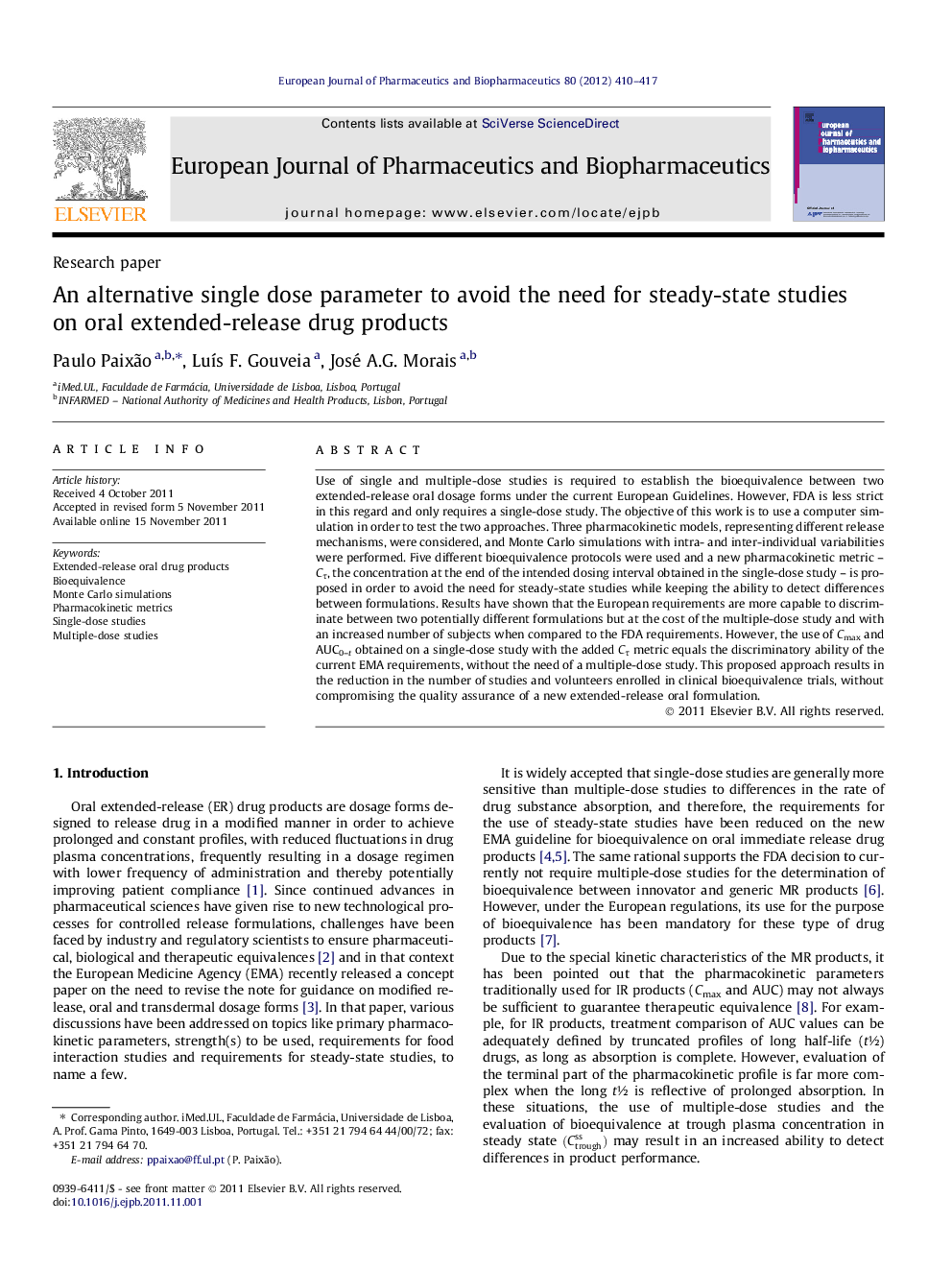| کد مقاله | کد نشریه | سال انتشار | مقاله انگلیسی | نسخه تمام متن |
|---|---|---|---|---|
| 2084021 | 1545363 | 2012 | 8 صفحه PDF | دانلود رایگان |

Use of single and multiple-dose studies is required to establish the bioequivalence between two extended-release oral dosage forms under the current European Guidelines. However, FDA is less strict in this regard and only requires a single-dose study. The objective of this work is to use a computer simulation in order to test the two approaches. Three pharmacokinetic models, representing different release mechanisms, were considered, and Monte Carlo simulations with intra- and inter-individual variabilities were performed. Five different bioequivalence protocols were used and a new pharmacokinetic metric – Cτ, the concentration at the end of the intended dosing interval obtained in the single-dose study – is proposed in order to avoid the need for steady-state studies while keeping the ability to detect differences between formulations. Results have shown that the European requirements are more capable to discriminate between two potentially different formulations but at the cost of the multiple-dose study and with an increased number of subjects when compared to the FDA requirements. However, the use of Cmax and AUC0–t obtained on a single-dose study with the added Cτ metric equals the discriminatory ability of the current EMA requirements, without the need of a multiple-dose study. This proposed approach results in the reduction in the number of studies and volunteers enrolled in clinical bioequivalence trials, without compromising the quality assurance of a new extended-release oral formulation.
Five different bioequivalence protocols using pharmacokinetic end-points obtained on single and/or multiple dose studies on simulated extended-release formulations were tested. When evaluating bioequivalence, the inclusion use of the concentration at the end of the intended dosing interval obtained in the single-dose study avoids the need for steady-state studies while keeping the ability to detect differences between formulations.Figure optionsDownload as PowerPoint slide
Journal: European Journal of Pharmaceutics and Biopharmaceutics - Volume 80, Issue 2, February 2012, Pages 410–417